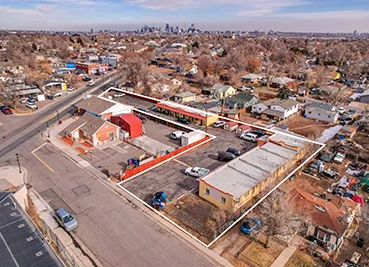Wheat Ridge could be first metro Denver suburb to reach majority renter population
For decades, urban areas were enclaves of rental properties and the suburbs havens of homeownership, but that pattern has shifted in many parts of the country over the past decade, according to a study from RENTCafé, an apartment search engine.
The number of suburban renters in the nation’s 50 largest major metros rose by 22% between 2010 and 2019, while the number of suburban homeowners rose by only 3%, the study found. Out of the 1,105 suburbs studied in those 50 large metros, 242 are now majority renter, compared to only 139 in 2010.
Metro Denver doesn’t have a major suburb where renters dominate — yet. Researchers at Yardi Matrix, the firm behind the study, expect Wheat Ridge will flip within the next five years and Federal Heights is edging closer as well.
In Wheat Ridge and Federal Heights, 47% of residents were renters in 2019, up from 42% and 43% respectively in 2010. The share of renters was rising the fastest in Broomfield, which went from 20% renters to 30%, and in Highlands Ranch and Centennial, which both went from 13% to 17% rental population.
Brighton also had a noticeable jump from 27% to 32% of residents renting. On the other end, Englewood, Westminster and Littleton had the slowest growth rates in the share of residents who were renters over the period studied.
More progressive zoning rules and a growing acceptance of single-family rental homes should accelerate the trend toward suburban rentals in places like metro Denver, where the shift hasn’t been as noticeable, said Doug Ressler, manager of business intelligence at Yardi Matrix, in an email.
Of the 4.7 million residents that the suburbs of the 50 largest metros have gained since 2010, nearly eight in 10 were renters, according to U.S. Census data. The suburban shift to renting is strongest in California, Florida and the mid-Atlantic region, but it is also gaining momentum in midwestern states like Ohio.
The pandemic appears to have accelerated the trend by pushing urban renters in search of more space and breathing room out to the suburbs. Remote work arrangements are also untethering some workers, allowing them to move further out. Some of those transplants are choosing to rent until they have a better sense of whether they will need to move back in closer to the office.
Nor is it a case that lower-income households priced out of homeownership are solely responsible. Beverly Hills, one of the nation’s wealthiest suburbs, has shifted to majority rental, and some wealthier suburbs outside Washington, D.C., have also made the flip, the study found.




